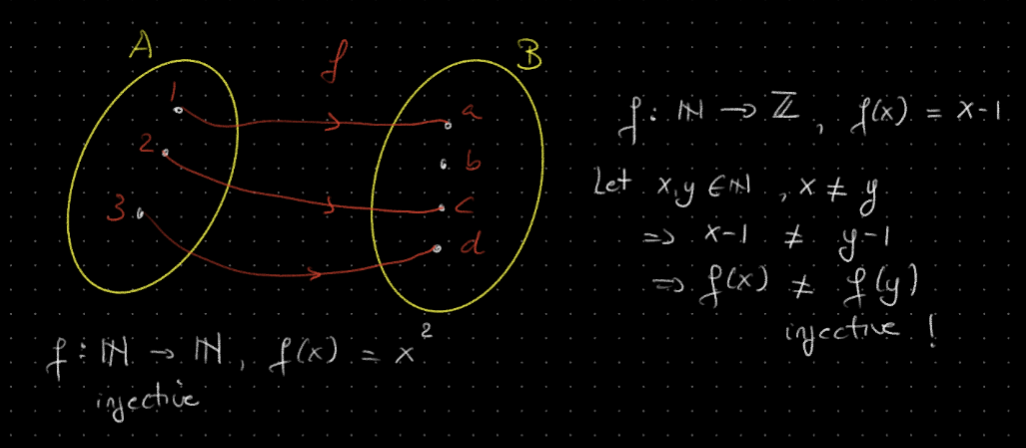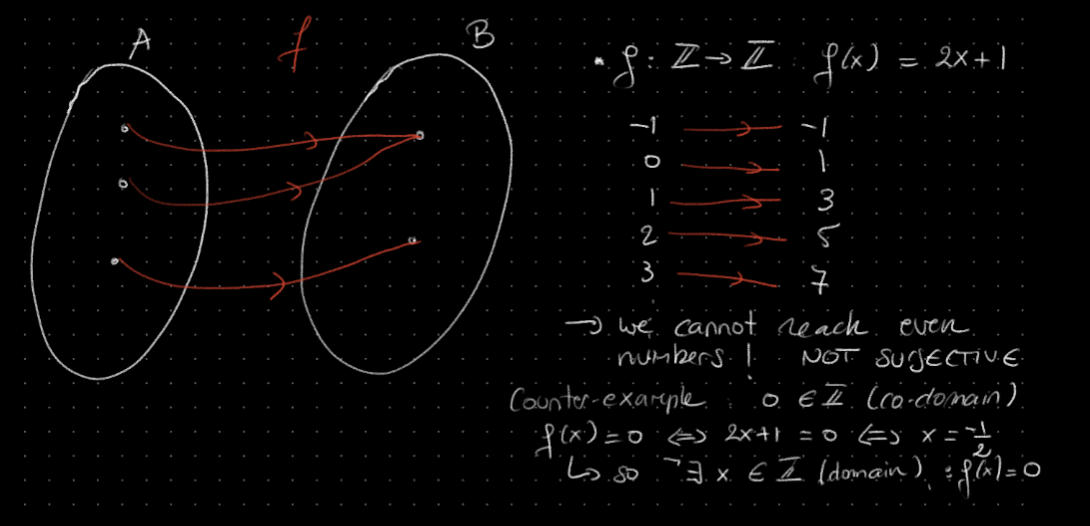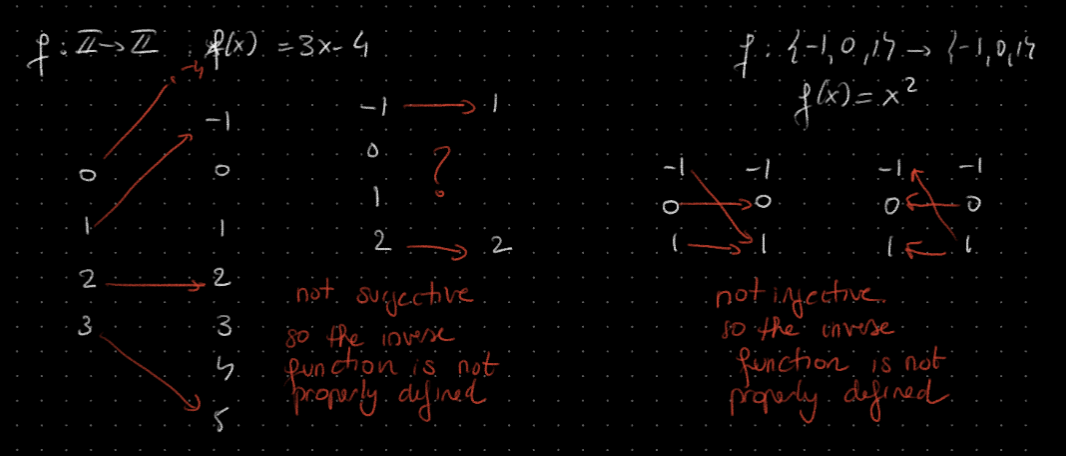Lecture notes
Injective functions
Definition
A function is injective if two different elements have different function values (Funzione iniettiva, every element of the domain is mapped to a different value of the codomain)
Formal definition: A function is injective if Contrapositive:

Proving that a function is injective:
→ prove that it is injective
- Let
- → Injective ✅
→ prove that it is not injective
- Not injective, since ❌
→ this is injective ✅
Surjective functions
Definition
A function is surjective if every element of B is the image of an element of A → the range is equal to the codomain (each element of the codomain has been mapped from at least an element of the domain)
Formal definition: A function is surjective if

Proving that a function is surjective
Warning
We can usually prove that a function is not surjective by finding a counterexample
Example 1
- ❌
Example 2
We use one of the definitions, for example the definition of f(x) when x is even
- Let
- , so x is even
- with x even,
We can also use the other definition:
- Let
- so x is odd
Example 3
- take detailed notes of this example
Bijections
Definition
A function is a bijection if it is injective and surjective (Each element of the domain is mapped to exactly 1 element of the codomain)

Proving a function is bijective
Example 1
- Not a properly defined function!
- Since (domain), but (co-domain)
Example 2
- Check if it is injective: (def)
- Let
- then
- so → Injective ✅
- Check if it is surjective: (def)
- Disproof by counter example
- (co-domain) →
- → x is not in the domain, f is not surjective ❌
The function is not bijective ❌
Example 3
Check if it is injective
- Let
- then
- so → Injective ✅
Check if it is surjective
- Let (co-domain)
- choose an
- ( )
- and → Surjective ✅
Then the function is bijective ✅
Inverse functions
Definition
The inverse of a function reverses the function (inverting all the arrows). A function needs to be bijective for the inverse function to be properly defined

Example
Calculating the inverse
- We start by calculating the inverse function
- so
- Is is defined on domain (co-domain of )?
- No, it is defined for
- We adjust the domain of so that they are both inverse functions of one another, making them bijective
Checking the inverse function
\left( 2\right) f^{-1}\left( f\left( x\right) \right) ,x\in \mathbb{R} -\left\{ 2\right\} \end{aligned}$$ ## Key takeaways - Do you know what injective, surjective means? - Can you prove that a function is injective? - Can you prove that a function is surjective? - Do you know what a bijection is? - Do you understand that only bijective functions are invertible? - Do you know how to check that a function is the inverse? - - - ## Lecture slides ![[Attachments/DM-L9 Discrete Mathematics.pdf]]